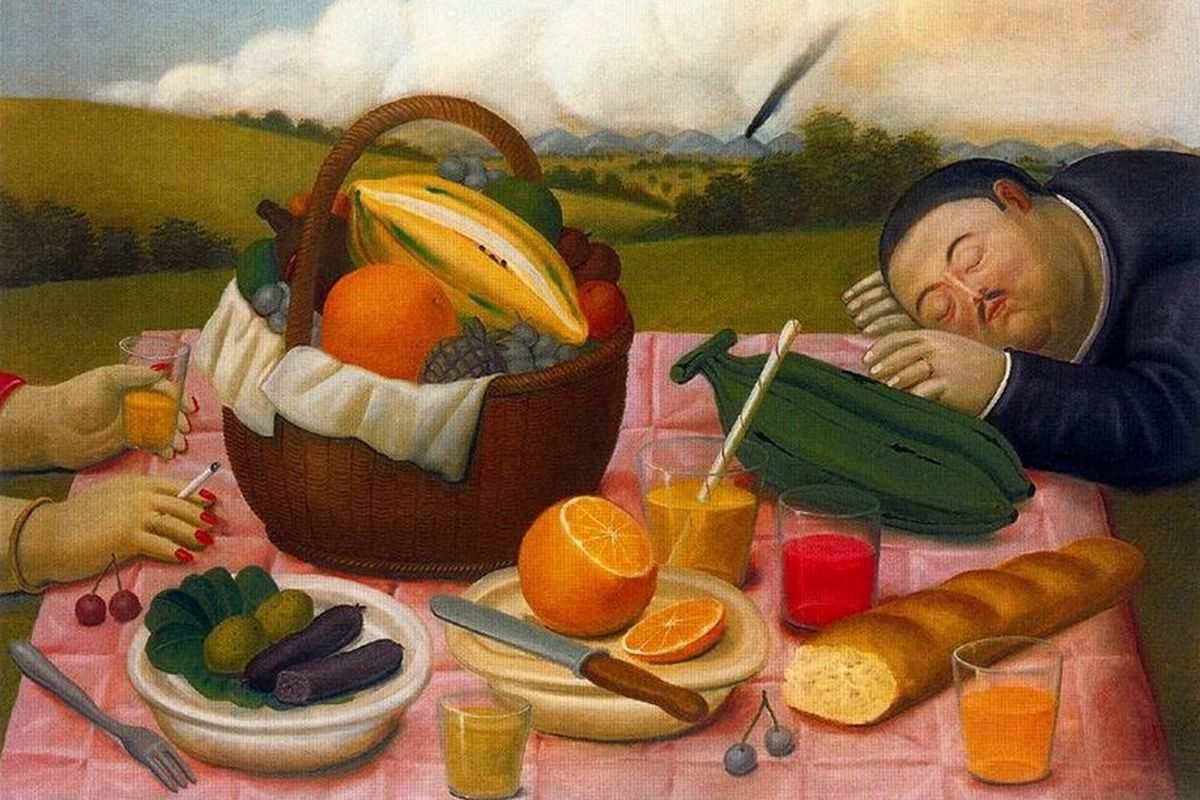Fernando Botero, a Colombian artist (born April 19, 1932, died September 15, 2023), developed a unique artistic style known as “Boterismo.” This guide will explore the depths of Boterismo, from its origins and defining characteristics to its impact on the art world and its enduring legacy.
Exploring the World of Boterismo
Fernando Botero’s art, with its rounded figures and exaggerated proportions, is instantly recognizable. This distinctive style, Boterismo, is more than just an aesthetic choice; it’s a powerful lens through which he examines the human condition and provides social commentary. He magnifies the everyday, transforming the ordinary into the extraordinary, and invites us to reconsider our perceptions of beauty, power, and societal norms.
The Origins and Influences of Boterismo
The development of Boterismo likely stemmed from a confluence of influences. Growing up in Medellín, Colombia, Botero was surrounded by the vivid imagery of pre-Columbian art. The bold shapes and rich colors of ancient sculptures probably played a significant role in shaping his artistic sensibilities. Later, his studies and travels in Europe exposed him to Renaissance and Baroque masters, further enriching his artistic vocabulary. Some experts even suggest the vibrant colors he adopted after his stay in Mexico in 1956 point to the influence of Mexican muralists. All these elements, combined with his unique vision, coalesced to form the foundations of Boterismo.
Decoding the Elements of Botero’s Style
Several key characteristics define Boterismo:
| Feature | Description |
|---|---|
| Monumental Volume | Exaggerated size gives his subjects a commanding presence. |
| Curvaceous Forms | Rounded, smooth shapes create a sense of harmony and fullness, reminiscent of sculptures. |
| Vibrant Colors | Bold, saturated colors amplify the emotional impact, from joy to somber reflection. |
| Flattened Perspective | The lack of realistic depth emphasizes shapes and colors. |
| Stillness & Monumentality | Subjects often possess a timeless quality, suggesting they embody larger concepts. |
Boterismo as Social Commentary
Boterismo isn’t merely about aesthetics. The inflated forms are imbued with meaning, serving as a vehicle for exploring complex themes: political power, human suffering, the quirks of human nature, and even the absurdities of societal norms. Botero holds a mirror to society, sometimes playfully, sometimes critically, prompting us to confront uncomfortable truths. His humor, often satirical, adds another layer to his critique, making us laugh while we think.
The Enduring Impact of Boterismo
Fernando Botero’s Boterismo has undoubtedly left an indelible mark on the art world, especially in Latin America. It has reshaped our understanding of representation in art. Ongoing research suggests his influence can be seen in the works of numerous contemporary artists, though the full extent of his impact is still being explored. Learn more about why Botero is so famous. While analysis can dissect the elements of Boterismo, it’s ultimately an experience – feeling the weight of the figures, the vibrancy of the colors, and the power of their stories. It’s an invitation to see the world through Botero’s eyes, where volume and form aren’t just stylistic choices but potent instruments of social commentary.
What Does Boterismo Mean?
Boterismo, conceived by Colombian artist Fernando Botero, is an aesthetic philosophy centered on exaggerated volume and proportion. It’s about amplifying “fullness,” making everything rounder, curvier, and larger than life. This distinctive style, with its inflated figures and objects often bathed in vibrant colors, is instantly recognizable. But Boterismo is more than just a playful aesthetic; it’s a complex language Botero uses to communicate his unique perspective.
The exaggeration inherent in Boterismo allows Botero to explore various themes, from the mundane to the deeply political. The inflated figures can represent abundance and prosperity, or the excesses of power and the absurdities of human behavior. The vibrant colors are not merely decorative; they heighten the emotional impact and can amplify the irony or weight of a piece. Boterismo has sparked discussions about representation, beauty, consumerism, and excess, leaving an undeniable mark on the art world. Its impact continues to resonate, provoking debate and inspiring new interpretations.
Here’s a summary of Boterismo’s key elements:
| Feature | Description |
|---|---|
| Volume | Exaggerated, rounded forms |
| Proportion | Distorted, larger-than-life figures and objects |
| Color | Often vibrant and intense, used to enhance emotional impact and meaning |
| Subject Matter | Ranges from everyday life to social and political commentary |
| Impact | Influential, sparking discussion about representation and aesthetics |
Our understanding of Boterismo continues to evolve as art historians and enthusiasts delve deeper into Botero’s work.
Why is Botero So Famous?
Fernando Botero’s fame stems from a confluence of factors, from his unique artistic style to his profound social commentary and the global recognition he’s achieved. His signature style, Boterismo, transforms the ordinary into the extraordinary through inflated figures, rounded forms, and vibrant colors. This distinctive aesthetic, playful yet powerful, immediately captures the viewer’s attention.
But Boterismo is more than just a visual spectacle. Botero uses it to communicate deeper messages, often subtly critiquing societal norms, political power, corruption, and social inequalities. This blend of social commentary and humor makes his work accessible and thought-provoking, appealing to a wide audience. His art is further enriched by its cultural significance, often drawing inspiration from his Colombian heritage and celebrating Latin American life.
While his work is widely celebrated, Botero has also faced criticism, with some questioning the simplicity of his style or the depth of his social commentary. However, his influence on contemporary art is undeniable, inspiring countless artists and sparking ongoing discussions about art’s role in society. Learn more about Boterismo’s meaning. Our understanding of Botero’s work is constantly evolving, thanks to ongoing research and new perspectives.
Why did Fernando Botero Paint the Mona Lisa?
Fernando Botero’s reinterpretations of the Mona Lisa, particularly “Mona Lisa, Age Twelve” (1959) housed in the Museo de Botero, Bogotá, Colombia, and “Monalisa” (1978), aren’t mere copies but rather a complex dialogue with Da Vinci across centuries. He wasn’t striving for improvement, but offering a contemporary perspective on power, beauty, and their shifting nature, using the iconic Mona Lisa as a shared language.
Botero’s versions transform Da Vinci’s subtle and elegant figure into rounded, voluminous forms, challenging conventional aesthetics and prompting reflection on the evolving ideals of beauty. This exaggeration may also allude to the historical association of plumpness with wealth and prosperity, creating a contrast with today’s often slender ideals. Delve deeper into the world of Boterismo.
Several theories surround Botero’s motivations. Some believe the paintings satirize the art world’s obsession with masterpieces, while others suggest an exploration of beauty’s timeless nature, reinterpreted across eras and styles. The ongoing research on Botero’s work allows for evolving interpretations. His Mona Lisa paintings invite continuous dialogue and reflection, enabling viewers to engage with art in new and thought-provoking ways. For example, consider the Borgund Stave Church, a piece of architecture that similarly prompts reflection on beauty and history.
- Unlock Elemental 2 Secrets: Actionable Insights Now - April 2, 2025
- Lot’s Wife’s Name: Unveiling the Mystery of Sodom’s Fall - April 2, 2025
- Photocell Sensors: A Complete Guide for Selection and Implementation - April 2, 2025

















1 thought on “Boterismo: Volume, Form, and the Art of Social Commentary in Fernando Botero’s World”
Comments are closed.